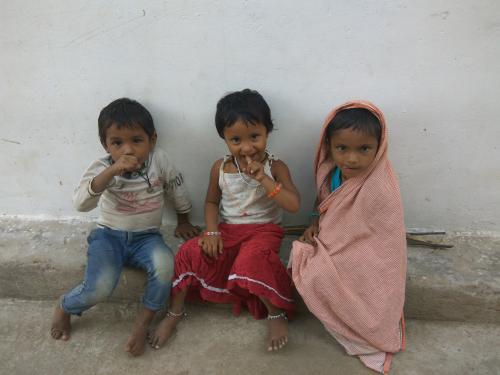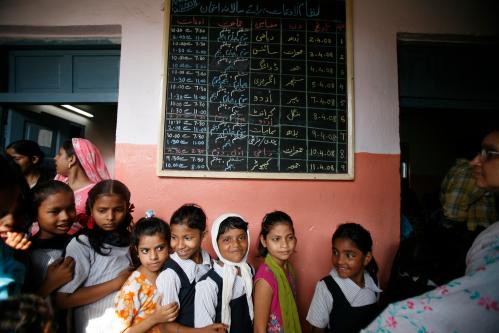This piece is a summary of the new report, “India’s policy on early childhood education”
Now is a pivotal moment for early childhood education (ECE) in India. India’s draft National Education Policy (NEP), made public in June 2019, dedicates its first chapter to the importance of early childhood care and education and the need to extend the right to education to children ages three to six. The policy does not, however, address equity and inclusiveness in the early years with respect to gender. Currently, the policy takes a gender-blind approach and overlooks the need for gender-sensitive pedagogies or to challenge gender stereotypes in class or at home. This lack of attention to gender in the early years risks missing a critical opportunity to address harmful gender stereotypes that fuel gender-based violence and discrimination plaguing the country today.
In this video, Samyukta Subramanian, 2019 Echidna Global Scholar, discusses how we must tackle gender inequality in the early years through engaging girls, boys, teachers, and parents.
There is scant research in India that systematically documents the early childhood learning environment in homes and schools regarding prevalent gender inequalities and norms. To address this gender gap in ECE, my forthcoming research as a 2019 Echidna Global Scholar explores gendered realities in the child’s early years and outlines concrete steps to promote gender transformation in early childhood.
Preschoolers spend most of their time at home with mothers, siblings, grandparents, and other family members, as well as in class with teachers and children of the same age. Notions of gender inequality are carved out in the interactions that take place in the interconnected spaces of home and school. Through interviews with mothers and teachers of preschool children in under-resourced communities, as well as observations of government-supported preschool centers, my research highlights the gendered narrative of the Indian preschool child’s educational ecosystem.
My research
During the semi-structured interviews with mothers—to my delight—I found evidence of a positive shift in the mindset of mothers of preschool children in Delhi, India. Almost all mothers considered girls and boys “equal.” They wanted their children to attend school, and regardless of gender, to get a job after school and choose a professional career as an adult. The mothers’ ability to articulate gender equality is an encouraging first step toward achieving it. However, when asked where their young preschool girls played, most mothers reported that their girls tended to play inside the home, while boys played outside, not realizing the irony of the statement when it comes to perpetuating gender stereotypes. One mother stated: “The games for boys and girls are different. Boys play cricket and like running, while girls play hide-and-seek. Girls understand household work, while boys must work outside and need more physical strength.” The same mother, however, stated that girls and boys should be treated as equals, again clearly demonstrating the gap between mothers’ articulation of gender equality between boys and girls and gender stereotypical practices.
Teachers, too, showed gendered expectations of children in class and at home. Preschool teachers stated that boys are generally naughtier than girls in the classroom; though they could not say why, they insisted this held true for all children they taught. When children parroted the gender stereotypical roles they witnessed at home in class, teachers accepted it without question. Teachers did not recognize how play, stories, songs, and other preschool activities shape stereotypes that can influence educational, occupational, and social outcomes. This underscores the need to raise awareness about gender stereotypes with preschool teachers while also equipping them with the tools to address assumptions around traditionally held gender norms in class.
Lessons learned
Two clear lessons emerged from my research: First, we must take an ecosystems approach to ECE, working with children but most importantly adults. Both parents and teachers must be sensitized for young children to develop gender equitable attitudes and behavior.
Second, changing parents’ views on traditional gender roles will require clear channels of communication and constant dialogue, which can occur through leveraging preschool teachers and digital platforms that parents can access. Teachers need to move away from the traditional “chalk and talk” role to instead nurture in the classroom and become the bridge between the child and his/her parents. They can question gender stereotypical assumptions with children and gendered expectations with parents. On the digital platform front, my research found that even in under-resourced communities, there were smart phones and television sets in every home. Using these platforms to communicate with parents could provide exposure to diverse role models and challenge traditionally held gendered notions to change behavioral practices at home.
A gender-transformative approach tackles the root causes of gender inequality and reshapes unequal power relations by working at individual, familial, and institutional levels. If we do not take a gender-transformative approach to early childhood in India by engaging girls, boys, teachers, and parents now, we won’t cut the roots of gender-based violence and discrimination before the next generation comes of age.







Commentary
To ensure a gender-transformative approach in the early years, India must engage parents and teachers
October 14, 2019